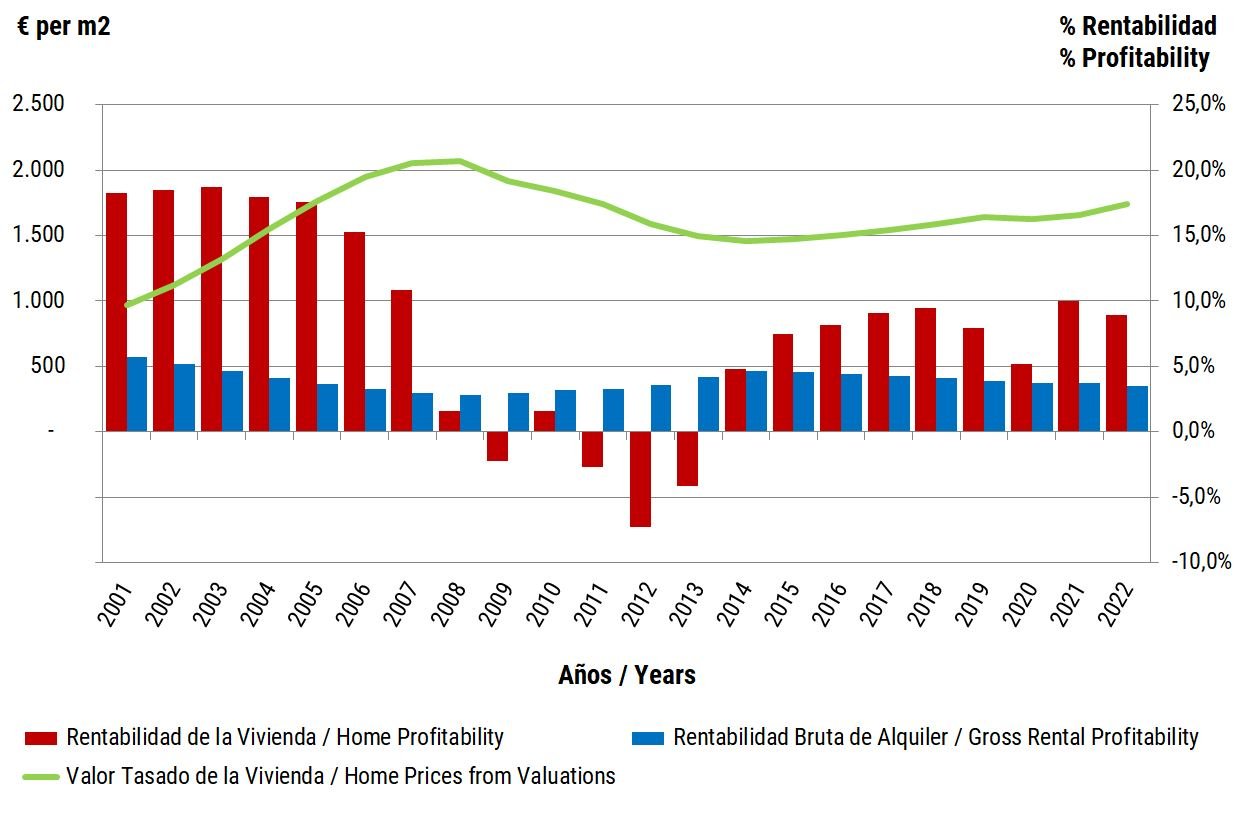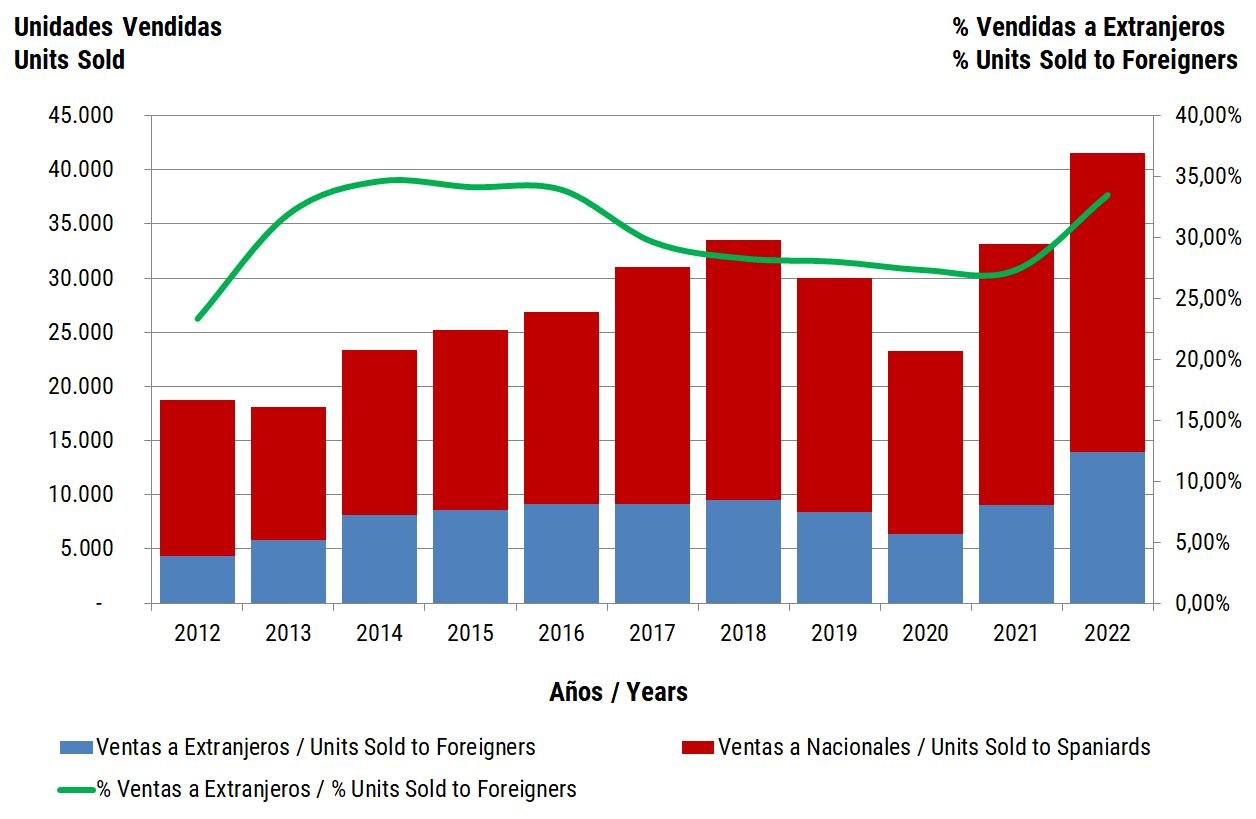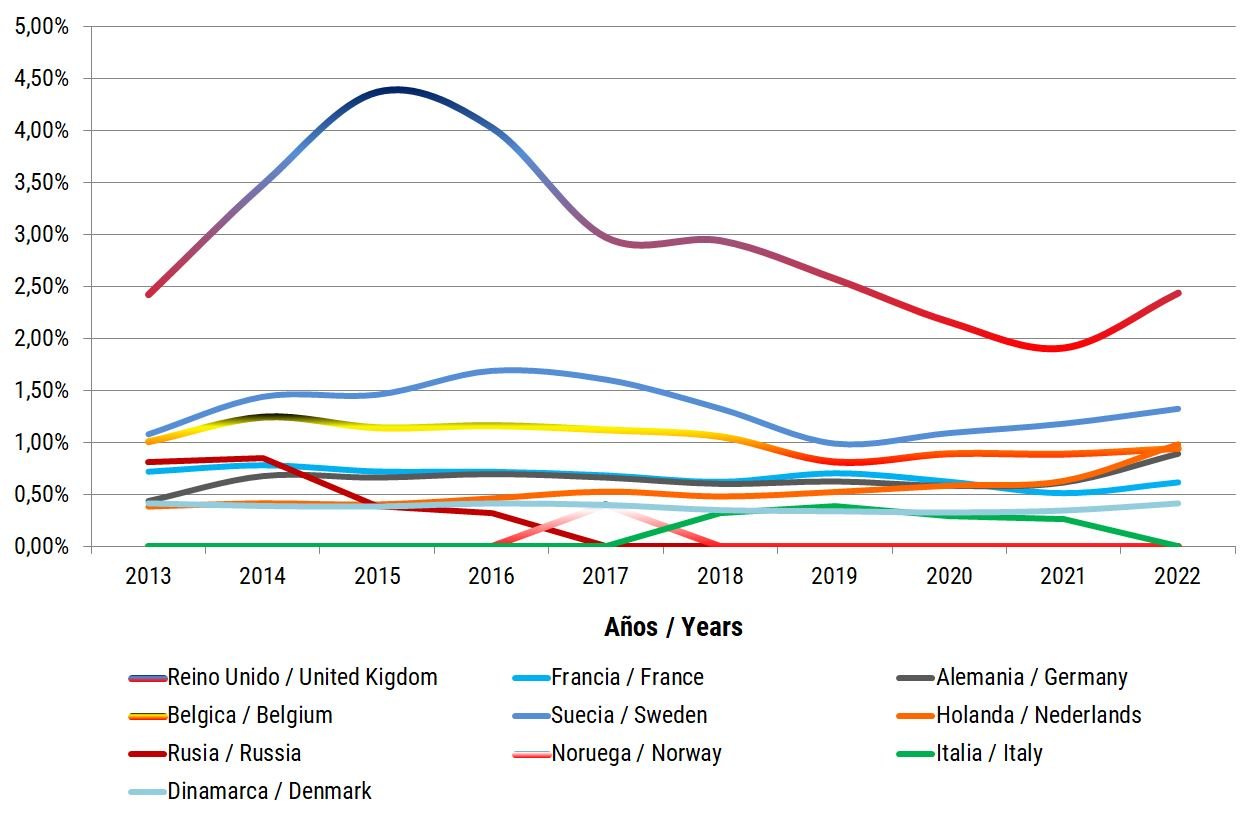En medio de la desaceleración general experimentada en el mercado inmobiliario de Marbella y Benahavís en 2023, marcada por una significativa disminución del 26% en el número total de viviendas vendidas, surge la pregunta de cómo esta desaceleración afecta al segmento de las propiedades de lujo, definidas aquí como aquellas valoradas en un millón de euros o más.
Los Gráficos 1 y 2 presentan el número de propiedades vendidas en varios tramos de precios y la proporción de ventas en el mercado de lujo en comparación con el número total de propiedades vendidas tanto en Marbella como en Benahavís. Estos datos revelan aspectos interesantes que merecen ser destacados:
1.- Ralentización paralela en el segmento de lujo: El mercado de lujo refleja la tendencia general, experimentando una caída significativa del 26% en Marbella y un descenso aún más pronunciado del 30% en Benahavís. A pesar de esto, se observa un atisbo de resistencia, especialmente en los niveles más altos del mercado y en Marbella, abarcando propiedades valoradas en cuatro millones de euros o más, que han experimentado un impresionante aumento del 18% en las ventas. Esto sugiere cierto grado de independencia de los desafíos del mercado en este segmento exclusivo.
2.- Sólido crecimiento del mercado del lujo: Incluso en medio de la desaceleración general del mercado, el segmento de lujo ha demostrado un crecimiento notable. El gráfico de los seis primeros meses de 2023 revela cifras de ventas que superan las registradas en años enteros de 2017 a 2020. Esta trayectoria ascendente en los últimos tres años señala la fortaleza y viabilidad duraderas del mercado inmobiliario de lujo en la región.
3.- Porcentaje ascendente de ventas de lujo en Marbella: Marbella continúa consolidando su presencia en el mercado de lujo, con el porcentaje de ventas en constante aumento. Este año, la cifra aumentó un 1% adicional, alcanzando un impresionante 13,2% del mercado global. En seis años, el porcentaje se ha duplicado, subiendo desde el 6,6% en 2017, lo que demuestra el sólido crecimiento que este segmento sigue exhibiendo.
4.- Tendencias dinámicas en Benahavís: Mientras que Benahavís muestra un patrón más fluctuante en los cambios porcentuales, hay una trayectoria ascendente general, con un notable aumento del 60% en los últimos seis años. La duplicación del porcentaje en la franja de precios más alta refleja la misma tendencia observada en Marbella.
5.- Atractivo distintivo de Benahavís: Cabe destacar la disparidad sustancial en el porcentaje de ventas de lujo en Benahavís en comparación con Marbella, especialmente por encima del umbral de los cuatro millones de euros. Benahavís supera sistemáticamente a Marbella en este segmento, consolidando su posición como destino codiciado por personas de alto poder adquisitivo. Esta tendencia ha contribuido a que Benahavís se haya ganado la distinción de ser el municipio más rico per cápita de Andalucía.
En resumen, el mercado inmobiliario del lujo en Marbella y Benahavís, aunque no es inmune a los retos del mercado en general, muestra una resistencia y un impulso cultivados en los últimos años. El atractivo de estas propiedades exclusivas persiste, prometiendo una trayectoria continua de éxito frente a la evolución de la dinámica del mercado.





































